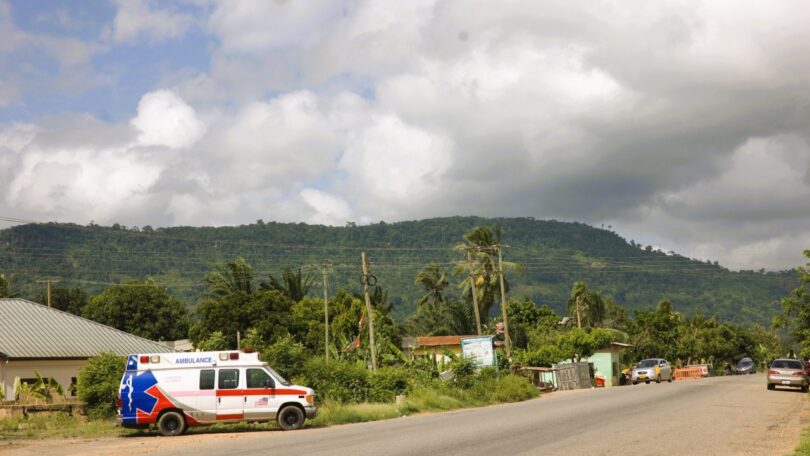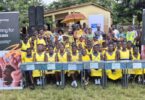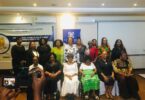Report By: News Desk
On a road trip that I embarked on last week from the Ashanti region, we stopped to admire one of the mountain ridges we had in sight. And I thought to myself, “What is life like living on the slopes or the valley of this mountain?” In all its serenity, I posed and I recalled that these environs also make accessibility a nightmare.
It then got me musing about the development work and attempts to reach out to those in dire need- the most left behind.
Working across the African continent, I realised that what may be called left-behind populations greatly vary from context to context, albeit with deeper nuances in conflict or post-conflict zones.
In some, they constitute people living in the most rural settings, where access is virtually impossible and telephone connectivity almost non-existant, they are people who “are abled differently” – people living with albinism, the blind, the deaf, children with no parental care such as those on the move – immigrants, street children or children living in prisons, the elderly – mostly accused of witchcraft and confined in witchcraft camps, women and girls stripped off their agency to decide for their bodies, and in conflict zones, they care for the wounded, while facing sexual violence and living just a day a time.
To be honest, they are mostly the populations that were left unplanned for in development plans, as they are almost invisible, or may even be just forgotten. In conflict zones, they are the “collateral damage”, whose plight is often exacerbated by the instability.
One of the core tenets of the UN Charter is the recognition that all humans are born with inherent, inalienable, and interdependent entitlements – Human Rights.
This principle is cardinal in development work, not just in the UN but in the development sector at large. It means always finding the left-behind populations as we implement or support development initiatives.
In UNFPA, it means reaching out to women, girls, and young people to ensure that they claim their rights and live with dignity as human beings.
For example, it means ensuring that women with birth canal defects- Fistula, are provided with surgical and post-surgical care to be accepted back in society, that adolescent girls are protected from early and forced marriages so they can become who they want, that survivors of Gender Based Violence, including sexual violence, are provided with psychological, legal or clinical care for their healing, or young people are given the opportunity to shape the future they will live to take forward.
As I rethink and reimagine the future of development, locating it within the ongoing discourses on cuts on development financing, I am grappling with some questions; questions that center on whether or not human rights matter after all, that introspect if we, as global citizens or development practitioners done enough to promote social and economic rights for all?
I ask even more; when resources are scarce and confronted with the choice to alleviate human development problems, or simply put, save lives, which lives do we prioritise? Are some lives more “worth saving” than others?
There is no doubt that substantial investments have been made to alleviate human suffering or indeed save lives. Tangible uplifting narratives exist.
By 2023, UNFPA in Ghana had phased out programmes in some parts of the country, where efforts drove real change – from reducing maternal deaths to advancing gender equality and supporting survivors of violence.
In the Upper West region, maternal mortality dropped significantly – from about 520 deaths per 100,000 live births in the early 1990s, to 466 in 2010, and further down to 193 by the mid-2010s, and access to family planning services and reproductive health education in Ghana has improved significantly, with modern family planning coverage rising from 33% in 2013 to nearly 50% by 2022, thanks to our donors who believed that change could happen and the government of Ghana who has demonstrated strong commitment by increasing the health sector budget by 13.4% in 2025, allocating over GH₵17.8 billion to the Ministry of Health, and uncapping the National Health Insurance Levy to enhance financial sustainability and healthcare access.
This success story is just one of the many success stories I have seen in Ghana and many other contexts across the continent. Many testaments from beneficiaries continue to surface every day.
And yet, a scan across the African continent where I work shows the population of those left behind remains high.
An average of nearly 500 women die every day from preventable pregnancy and childbirth complications, while millions of girls still remain out of school, limiting their opportunities.
It will take a twelvefold increase in the current pace of progress to reach gender equality and meet maternal mortality targets by 2030.
More than 464 million people still live in extreme poverty, surviving on less than $2.15 per day.
Meanwhile, ongoing conflict and natural disasters continue to displace millions, further undermining health systems and access to essential services across the region.
Evidence has demonstrated time and again that when development financing shrinks, some populations bear the brunt.
The people marked as left behind – those living on the periphery of societies, the unseen, and the vulnerable – are the worst casualties as they become more difficult to reach, thereby widening the inequality gaps. This is partly because of the different programming approaches required to reach them.
The type that requires not only financing to get to the lowest echelons of society, but also the one that demands tact to identify and voices to amplify their voices.
As we think of how best to optimise development funding or how to shift into development financing, the left-behind populations should not be forgotten. From the programming perspective, it may mean four key things:
Rethinking data needs that allow us to identify those left behind – with the discontinuation of the Demographic Health Surveys as a key data set that informed our identification of those left behind, we need to look at other data options that allow pinpointing where to find these left-behind populations.
Employing impact investment that centres on serving the furthest behind first. Whilst the needs are many, it is time that we really ensure that investments are reaching those most in need.
Refocus on system strengthening for long-term impact. When we think of development with a systems approach, strengthening the very facets that make the engine work without missing the loop becomes more necessary than ever.
Partnerships – we must work at “friendraising” so that everyone plays their part in supporting dignity for all.
It is about rebooting our thinking, questioning old assumptions, and embracing new ways of working. Are we adapting? Certainly.
Will things return to the way they were before February 2025? Absolutely not – out of this uncertainty, a new order is emerging – one that, if we are intentional, could finally deliver on the promise of leaving no one behind.
This shift demands resilience and creativity in how we uphold human rights and social justice.
At the end of the day, the real test of our progress is not found in the comfort of averages, but in the lives of those who have waited longest for justice, dignity, and a fair shot at the future.
The lives of those on society’s margins are equally valuable, and our commitment must reflect that truth.
By focusing on the furthest behind, streamlining efforts, and embracing innovation, we can honour the founding principles of the UN and build a more just and equitable world.
Author: Emmily Sandra Naphambo, PhD. / naphambo@unfpa.org
Source: www.thenewindependentonline.com








